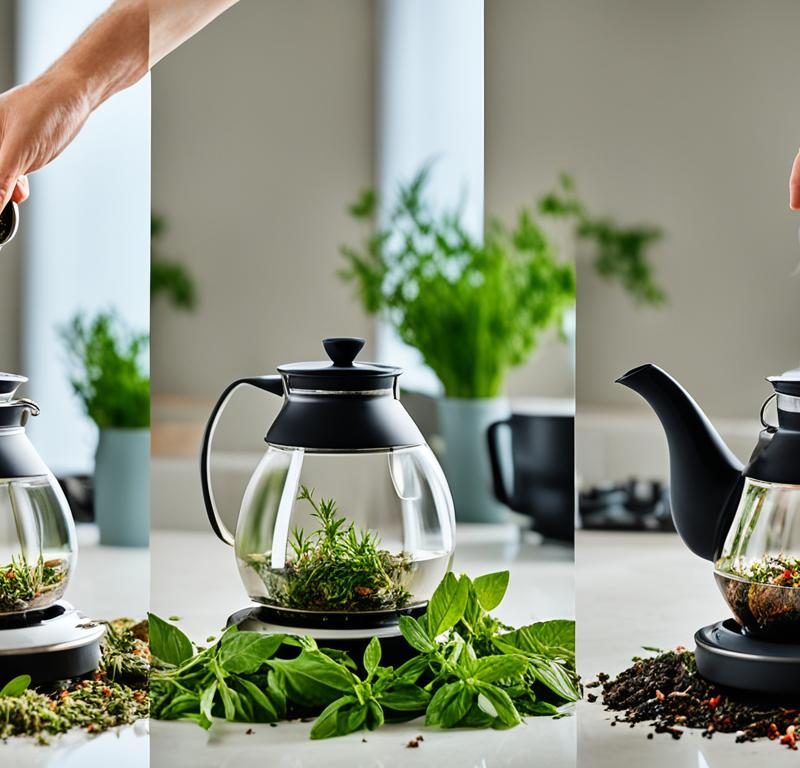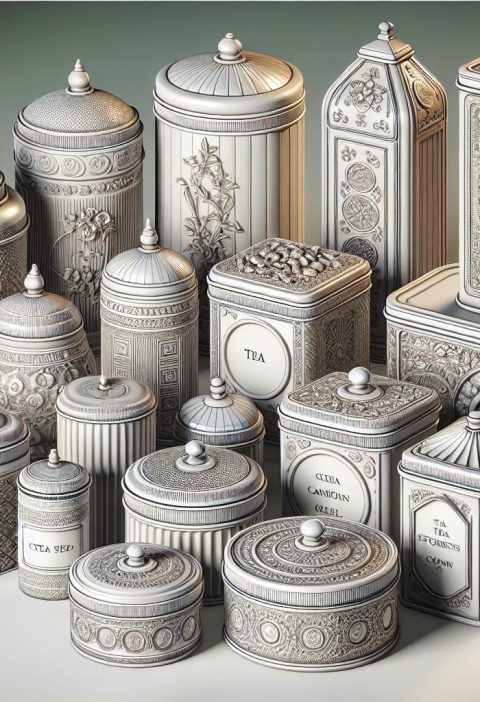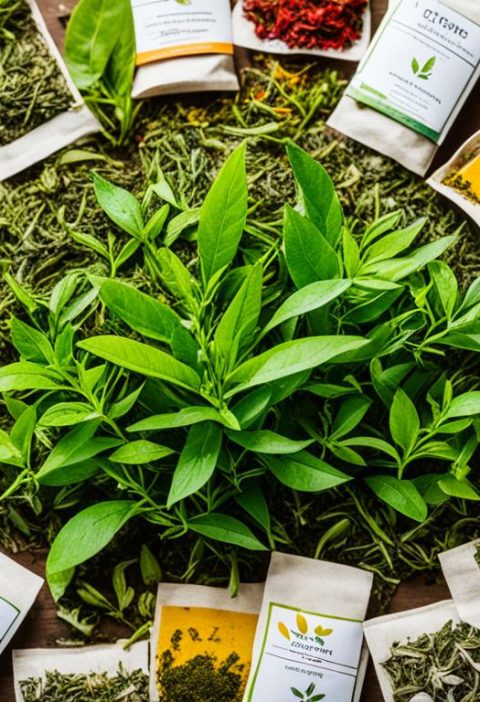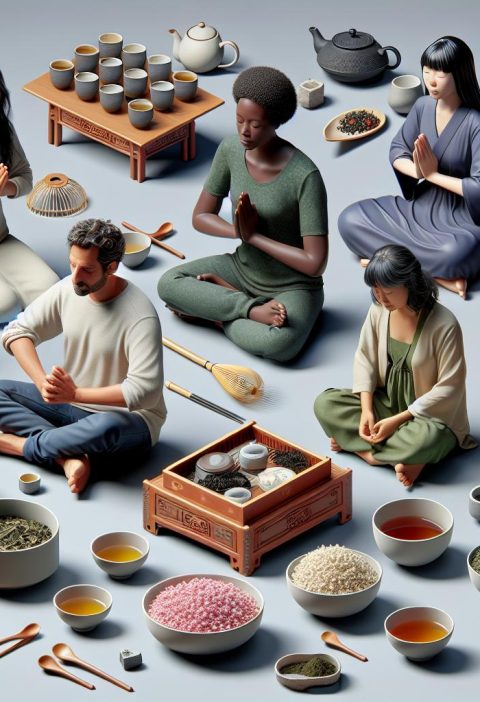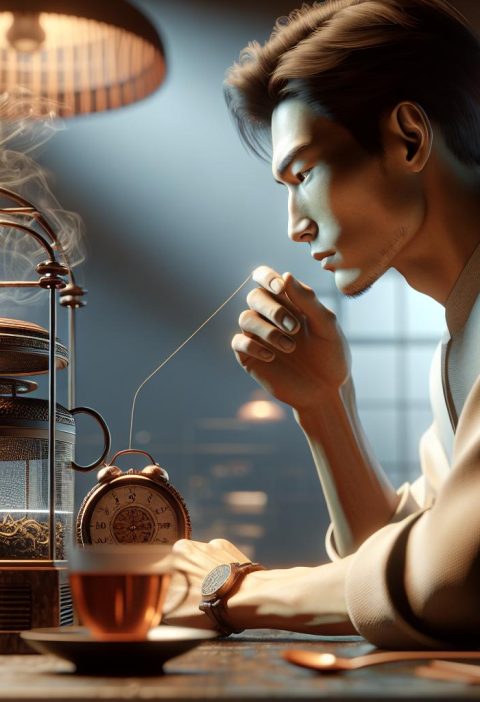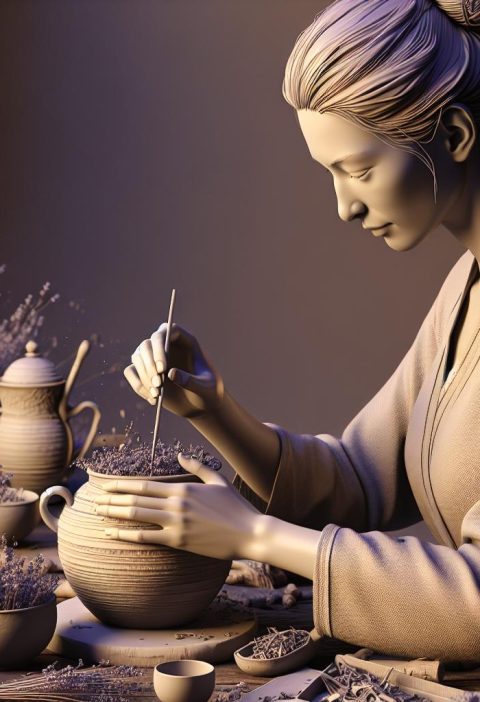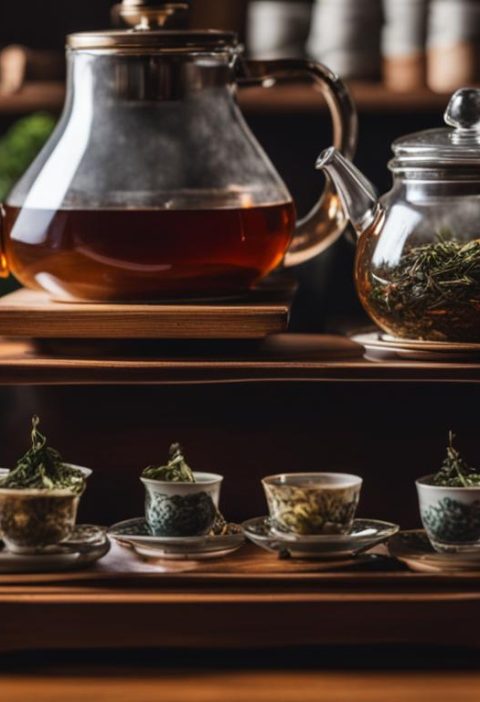Steeping and brewing are two essential processes in making tea, but they have distinct differences. While steeping involves the soaking of tea leaves in water, which can be either hot or cold, brewing involves the continual application of heat from an outside source, like a flame or burner. Understanding the nuances between steeping and brewing is crucial for achieving the perfect cup of tea.
When it comes to preparing tea, steeping and brewing are two techniques that yield different results. Steeping involves allowing the tea leaves to infuse in water, while brewing entails the application of heat during the infusion process. Each method has its own advantages and considerations, and knowing when and how to use them can elevate your tea-drinking experience. As a seasoned tea connoisseur, I have explored the intricacies of both steeping and brewing, and in this article, I will provide you with actionable insights to help you understand and master these tea preparation techniques.
What is Steeping?
Steeping is the process of soaking tea leaves in water to extract their flavors and aromas. It can be done with both loose tea leaves and tea bags. The temperature and time for steeping depend on the type of tea being brewed. For example, black teas require a water temperature of 208 degrees Fahrenheit (98 degrees Celsius) and a steeping time of 3-5 minutes. Green teas, on the other hand, steep best at 175 degrees Fahrenheit (80 degrees Celsius) for 2-3 minutes. Proper steeping ensures that the tea is infused with the right amount of flavor without becoming bitter.
Key Takeaways:
- Steeping is the process of soaking tea leaves in water to extract flavors and aromas.
- The temperature and time for steeping vary depending on the type of tea.
- Proper steeping ensures a balanced flavor profile.
The Art of Brewing
Brewing refers to the act of making tea. It involves steeping tea leaves or tea bags in heated water while applying continual heat from an outside source. The key to brewing tea properly is to follow the recommended temperature and time guidelines for different types of tea. For example, black tea and pu’erh require a water temperature of 200-205 degrees Fahrenheit (93-96 degrees Celsius) and a brewing time of 1-3 minutes. Understanding the art of brewing helps to extract the full flavors and aromas from the tea leaves.
Key Takeaways:
- Brewing involves applying heat to steeped tea leaves or tea bags.
- Following the recommended temperature and time guidelines is essential for proper brewing.
- Brewing enhances the flavors and aromas of tea.
Factors Affecting Steeping and Brewing
Several factors can influence the steeping and brewing process. The quality of the tea leaves plays a significant role in the final taste and aroma of the tea. High-quality tea leaves will yield a more flavorful cup of tea. Additionally, the quality of the water used for steeping and brewing is crucial. Using filtered water or spring water enhances the taste of the tea. Another important factor is the tea-to-water ratio. Different types of teas require varying amounts of tea leaves for each cup of water. Adhering to the proper tea-to-water ratio ensures that the tea is not too weak or too strong.
Key Takeaways:
- Tea quality, water quality, and tea-to-water ratio impact steeping and brewing.
- High-quality tea leaves result in a more flavorful cup of tea.
- Filtered or spring water enhances the taste.
What is Steeping?
Steeping is a fundamental process in the world of tea, where tea leaves are immersed in water to extract their rich flavors and delightful aromas. Whether using loose tea leaves or convenient tea bags, steeping allows the infusion of the tea’s essence into the water, creating a satisfying beverage. The steeping temperature and duration vary depending on the type of tea, ensuring optimal flavor extraction without any unpleasant bitterness.
When it comes to the steeping process, different teas demand different steeping parameters to unlock their true potential. By understanding the steeping temperature and time for each tea variety, you can ensure a perfectly steeped cup every time. Let’s take a closer look at the influential factors of the tea steeping process, including temperature, time, and tea-to-water ratio.
Steeping Temperature
The steeping temperature plays a crucial role in determining the flavor profile and overall quality of the tea infusion. Each type of tea has an ideal temperature range at which its tea leaves release their flavors harmoniously. Here are the recommended steeping temperatures for some popular tea varieties:
| Tea Variety | Steeping Temperature |
|---|---|
| Black Tea | 208°F (98°C) |
| Green Tea | 175°F (80°C) |
| Oolong Tea | 185°F (85°C) |
| Herbal Tea | 212°F (100°C) |
By adjusting the steeping temperature according to the specific tea variety, you can balance the extraction of flavors and avoid any undesirable taste attributes.
Steeping Time
Alongside steeping temperature, the duration of steeping also affects the final taste and aroma of the tea. Steeping time determines the intensity of flavor that infuses into the water. Here are some general guidelines for steeping times:
- Black teas: 3-5 minutes
- Green teas: 2-3 minutes
- Oolong teas: 3-5 minutes
- White teas: 4-6 minutes
- Herbal teas: 5-7 minutes
Keep in mind that these are approximate steeping times, and personal preferences may vary. Adjust the steeping time to achieve your desired strength and flavor intensity.
Tea-to-Water Ratio
The tea-to-water ratio refers to the amount of tea used relative to the volume of water. Finding the perfect balance ensures that the flavors are neither diluted nor overpowering. Here are some recommended tea-to-water ratios:
- Black, Green, Oolong, and White Teas: 1 teaspoon of loose tea leaves for every 8 ounces of water
- Herbal Teas: 1 tablespoon of loose herbal blend or botanicals for every 8 ounces of water
Of course, you can adjust the ratio based on personal taste preferences. Experimenting with different ratios can lead to exciting discoveries and a more customized tea experience.
Steeping tea is an art that allows you to savor the enticing flavors and captivating aromas of various tea varieties. By understanding the steeping temperature, time, and tea-to-water ratio, you can elevate your tea-drinking experience to new heights.
The Art of Brewing
When it comes to making tea, brewing is the fundamental process that brings out the flavors and aromas from the tea leaves. It involves steeping the tea leaves or tea bags in heated water while applying continual heat from an outside source. Mastering the art of brewing is essential for creating a perfect cup of tea that satisfies your senses.
To brew tea properly, it’s important to consider the recommended brewing temperature and time for different types of tea. Each tea variety requires specific conditions to extract its unique essence. For example, black tea and pu’erh tea perform best when brewed at a temperature between 200-205 degrees Fahrenheit (93-96 degrees Celsius) for a brewing time of 1-3 minutes. This combination of temperature and time allows the full flavor profile of the tea leaves to infuse into the water.
Understanding the art of brewing enables you to unlock the intricate flavors and aromas hidden within the tea leaves. The right brewing temperature ensures that the desired compounds are extracted, while the brewing time determines the strength and concentration of the beverage. By following the recommended guidelines, you can achieve a harmonious balance and enjoy a satisfying tea experience.
Factors Affecting the Brewing Process
Several factors can influence the brewing process and impact the taste of your tea. These factors include:
- Water temperature: The brewing temperature plays a crucial role in extracting the flavors and compounds from the tea leaves. Different teas require specific temperatures to bring out their optimal taste.
- Brewing time: The duration of the brewing process affects the strength and intensity of the tea. It’s important to follow the recommended brewing time to avoid over-extraction or under-extraction.
- Tea-to-water ratio: The ratio of tea leaves to water influences the concentration and flavor of the brewed tea. Finding the right balance ensures a well-rounded taste.
By carefully considering these factors and adjusting them according to the type of tea you are brewing, you can create a delightful cup of tea that showcases the unique characteristics of the tea leaves.
Brewing Temperatures and Times for Different Teas
| Tea Type | Brewing Temperature | Brewing Time |
|---|---|---|
| Black Tea | 200-205°F (93-96°C) | 1-3 minutes |
| Green Tea | 175°F (80°C) | 2-3 minutes |
| Oolong Tea | 195-205°F (90-96°C) | 3-5 minutes |
| White Tea | 175°F (80°C) | 2-3 minutes |
| Herbal Tea | 208°F (98°C) | 5-7 minutes |
Remember, these are general guidelines, and personal preferences may vary. Experimentation is key to finding the perfect brewing parameters that suit your taste.
With the art of brewing, you can transform simple tea leaves into a fulfilling sensory experience. Discover the delicate nuances of flavor and aroma as you explore the world of tea brewing. Whether you prefer a robust black tea or a delicate green tea, the art of brewing allows you to unlock the true potential of each cup, creating moments of pure enjoyment and relaxation.
Factors Affecting Steeping and Brewing
Several factors can influence the steeping and brewing process. In order to achieve the perfect cup of tea, it is important to consider the following:
Tea Quality
The quality of the tea leaves is a crucial factor in determining the taste and aroma of the final brew. High-quality tea leaves will yield a more flavorful and enjoyable cup of tea. Whether you prefer loose tea leaves or tea bags, selecting teas from reputable brands and suppliers ensure a better tea-drinking experience.
Water Quality
The quality of the water used for steeping and brewing also has an impact on the taste of the tea. Using filtered water or spring water can enhance the flavors, as it removes any impurities or additives that may alter the taste. Avoid using distilled water, as it can result in a flat-tasting brew.
Tea-to-Water Ratio
Getting the right balance between tea leaves and water is essential for a well-balanced cup of tea. Different types of teas require varying amounts of tea leaves for each cup of water. Adhering to the proper tea-to-water ratio ensures that the tea is not too weak or too strong. Below is a general guide for some common tea types:
| Tea Type | Tea-to-Water Ratio |
|---|---|
| Black Tea | 1 teaspoon of tea leaves per 8 oz of water |
| Green Tea | 1 teaspoon of tea leaves per 8 oz of water |
| Oolong Tea | 1-2 teaspoons of tea leaves per 8 oz of water |
| Herbal Tea | 1-2 teaspoons of tea leaves per 8 oz of water |
By considering these factors, you can enhance the overall quality of your tea brewing experience. Experiment with different combinations to find your preferred flavors and aromas. Remember, the art of steeping and brewing tea is a delightful journey of discovery, so enjoy the process and savor every sip.
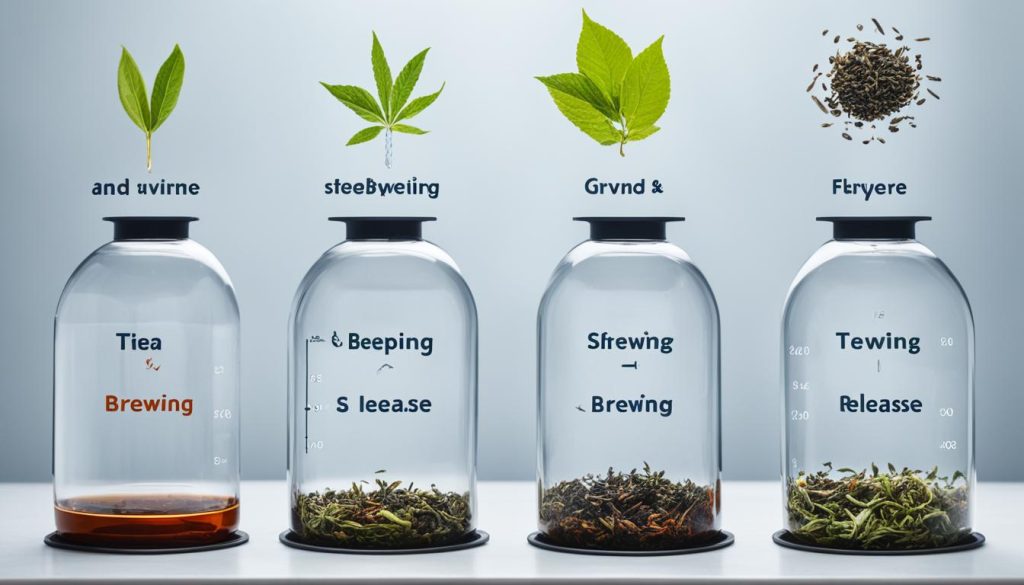
Steeping vs. Brewing Time
When it comes to preparing tea, understanding the steeping and brewing times is essential for achieving the perfect cup. Steeping time refers to the duration that tea leaves are left in contact with water, while brewing time encompasses both steeping and the additional time needed to apply heat. Each type of tea has its own recommended steeping and brewing time, as both factors significantly impact the flavor and aroma of the final brew.
Over-steeping or brewing for too long can result in a bitter taste. On the other hand, under-steeping may result in a weak or lacking flavor profile. To achieve optimal results, it’s crucial to follow the recommended steeping and brewing times for your chosen tea variety.
Below is a table outlining the general steeping and brewing times for various tea types:
| Tea Type | Steeping Time | Brewing Time |
|---|---|---|
| Green Tea | 1-3 minutes | 2-4 minutes |
| Black Tea | 3-5 minutes | 3-5 minutes |
| Oolong Tea | 2-4 minutes | 3-5 minutes |
| White Tea | 2-3 minutes | 2-4 minutes |
| Herbal Tea | 5-7 minutes | 5-7 minutes |
Remember, these times serve as general guidelines. Adjustments can be made based on personal preference, tea quality, and desired strength. Experimenting with different steeping and brewing times allows you to customize your tea experience to suit your taste preferences.
Choosing the Right Tea for Different Methods
When it comes to enjoying tea, selecting the right variety is crucial. Different types of teas have their unique characteristics that make them better suited for either steeping or brewing. Understanding the distinctions can help you optimize your tea-drinking experience.
Black teas, known for their robust flavors and ability to withstand prolonged heat, are ideal for brewing. The bold flavors of black teas are extracted effectively when exposed to hot water for an extended period. Brewing black teas results in a rich and full-bodied cup that appeals to many tea enthusiasts.
On the other hand, green teas are best steeped rather than brewed to avoid bitterness. Green teas are delicate and require lower water temperatures to preserve their unique flavors and minimize astringency. Steeping green teas at the recommended temperature and time allows for a more nuanced and refreshing cup.
In addition to black and green teas, there are other tea varieties that have their specific steeping or brewing techniques. For instance, oolong teas, with their partially oxidized leaves, are often brewed to accentuate their complex flavors. White teas are prized for their delicate and subtle nature, making them excellent for both steeping and brewing, depending on personal preference. Herbal teas, which are often caffeine-free, can be steeped or brewed depending on the specific herbal blend and desired intensity of flavor.
Choosing the right tea variety based on your preferred method—steeping or brewing—ensures that you achieve the best possible flavor profile. Experiment with different tea varieties and find the perfect balance between the brewing method and the tea’s inherent characteristics.
| Tea Variety | Ideal Method |
|---|---|
| Black Tea | Brewing |
| Green Tea | Steeping |
| Oolong Tea | Brewing |
| White Tea | Steeping or Brewing |
| Herbal Tea | Steeping or Brewing |
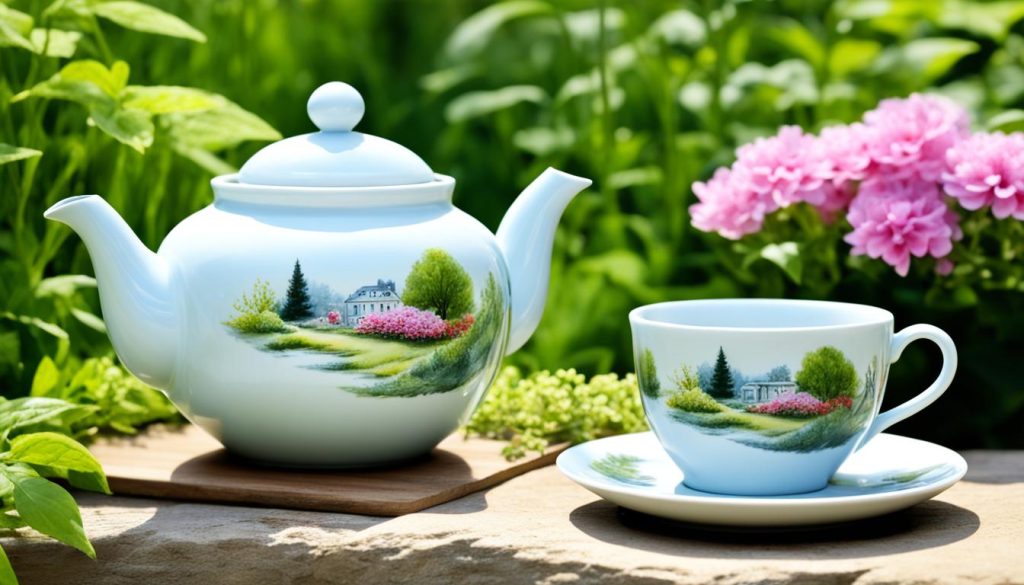
Tips for Perfect Tea Steeping
Steeping tea is a delicate process that requires precision and attention to detail. To help you achieve the perfect cup of tea, we have compiled a list of essential tips and best practices:
- Use the correct water temperature and steeping time: Each type of tea has an ideal water temperature and steeping time for optimal flavor extraction. Refer to the recommended guidelines to get the best results.
- Choose high-quality tea leaves or tea bags: The quality of the tea directly impacts the taste and aroma. Invest in premium tea products to elevate your steeping experience.
- Avoid over-steeping: Leaving tea in hot water for too long can result in a bitter taste. Follow the recommended steeping time to avoid any undesirable flavors.
- Experiment with different types of tea: Don’t be afraid to explore various tea varieties and find the ones that suit your personal preference. There is a wide range of flavors and aromas to discover!
- Consider using a tea infuser or strainer: Using a tea infuser or strainer makes it easier to remove the tea leaves after steeping, ensuring a smooth and enjoyable tea-drinking experience.
By following these tips, you’ll be able to steep tea properly and unlock the full potential of your favorite tea varieties. Now, let’s dive deeper into the world of brewing tea.
| Tea Type | Water Temperature | Steeping Time |
|---|---|---|
| Black Tea | 208°F (98°C) | 3-5 minutes |
| Green Tea | 175°F (80°C) | 2-3 minutes |
| Oolong Tea | 190-200°F (87-93°C) | 3-5 minutes |
| Herbal Tea | 208°F (98°C) | 5-7 minutes |
Techniques for Brewing Tea Properly
Brewing tea properly is an art that requires attention to detail. By following these techniques, you can brew tea like a pro and unlock its full flavor potential. Let’s explore some best practices for brewing tea:
-
Start with fresh, high-quality tea leaves or tea bags: The quality of the tea leaves directly impacts the taste of your brew. Choose teas from reputable brands or specialty tea shops to ensure a rich and satisfying cup of tea.
-
Heat the water to the recommended temperature: Different types of tea require specific water temperatures. Use a temperature-controlled kettle or a thermometer to heat the water accurately. This ensures that the tea extracts its flavors without becoming overly bitter.
-
Follow the brewing time guidelines: Each type of tea has its optimal brewing time. Whether it’s a delicate green tea that needs a shorter infusion or a robust black tea that requires a longer brew, follow the recommended brewing time to achieve the perfect balance of flavor.
-
Use the correct tea-to-water ratio: The amount of tea you use relative to the amount of water is essential for achieving a balanced flavor. Consult the packaging or use a tea measuring spoon to ensure you’re using the proper ratio for your chosen tea.
-
Pour the brewed tea into a separate teapot or cup: Once your tea has reached its desired strength, transfer it to a separate vessel to prevent over-brewing and bitterness. This technique allows you to enjoy your tea at its optimal taste.
-
Experiment with different brewing techniques: Don’t be afraid to explore alternative brewing methods to discover new flavors and aromas. Consider using a gaiwan, French press, or other specialized tea brewing equipment to enhance your tea drinking experience.
By incorporating these techniques into your tea brewing routine, you can elevate your tea drinking experience and savor each cup of tea with delight.
| Technique | Benefits |
|---|---|
| Using high-quality tea leaves | – Enhanced flavor – Richer aroma – Increased antioxidant content |
| Heating water to the recommended temperature | – Optimal extraction of flavors – Avoiding bitterness or astringency |
| Following brewing time guidelines | – Balanced taste – Preventing over-brewing |
| Using the correct tea-to-water ratio | – Consistent flavor – Achieving desired strength |
| Pouring brewed tea into a separate vessel | – Preventing bitterness – Enjoying tea at its optimal taste |
| Experimenting with different brewing techniques | – Discovering new flavors and aromas – Enhancing tea drinking experience |
The Benefits of Steeping and Brewing Tea
Both steeping and brewing tea offer numerous benefits. Steeping allows the flavors and antioxidants present in the tea leaves to gently infuse into the water, resulting in a flavorful and aromatic beverage. Brewing tea, on the other hand, takes the infusion process a step further by extracting even more of the beneficial compounds from the tea leaves. Regular consumption of tea, whether steeped or brewed, has been associated with various health benefits that can contribute to a healthier lifestyle.
Health Benefits of Tea
Drinking tea, regardless of the method used, can have a positive impact on overall well-being. The natural compounds found in tea leaves provide a range of health benefits. Here are some of the key benefits:
1. Improved Heart Health
Tea, particularly green and black tea, has been shown to support heart health. The antioxidants and catechins present in tea have properties that may help reduce the risk of heart diseases by improving cholesterol levels and reducing inflammation.
2. Increased Antioxidant Intake
Tea contains potent antioxidants called polyphenols. These antioxidants can help protect the body against damage caused by harmful free radicals, thus potentially reducing the risk of chronic diseases such as cancer and cardiovascular diseases.
3. Enhanced Cognitive Function
The presence of compounds like caffeine and L-theanine in tea can have a positive effect on cognitive function. Drinking tea may help improve focus, attention, and alertness, while also promoting a sense of calm and relaxation.
4. Hydration
Tea is a hydrating beverage, making it an excellent alternative to sugary or carbonated drinks. It can help replenish fluids and contribute to maintaining optimal hydration levels throughout the day.
To fully reap the health benefits of tea, it’s important to choose high-quality tea leaves and follow proper steeping or brewing techniques.
So whether you opt for a soothing cup of steeped tea or a robust brew, incorporating tea into your daily routine can have a positive impact on your overall well-being.
Exploring Tea Steeping and Brewing Variations
Beyond the basic steeping and brewing methods, there are numerous variations and alternative techniques to explore in the world of tea. These variations offer unique flavors, aromas and cultural significance. Let’s dive into some of the exciting possibilities:
Cold Steeping
Variation in tea steeping
Cold steeping involves the process of steeping tea leaves in cold water for an extended period. This method is commonly used to create smooth and refreshing iced tea. The longer steeping time allows for a gradual infusion of flavors, resulting in a delicate and balanced taste. Cold steeping is particularly popular for green teas and herbal infusions, such as chamomile or mint.
Alternative Brewing Vessels
Variation in tea brewing
Exploring different tea brewing vessels can elevate the tea-drinking experience and bring out unique flavors in the brew. Clay pots, such as Yixing teapots, are renowned for their ability to enhance the tea’s aroma and create a rich, smooth flavor profile. Glass teapots, on the other hand, allow tea drinkers to appreciate the visual beauty of the brewing process. Each brewing vessel offers a distinct experience that adds depth to the enjoyment of tea.
Cultural Tea Ceremonies and Traditions
Unique tea steeping techniques
Throughout history, various cultures have developed their own tea ceremonies and traditions, each with its specific steeping or brewing techniques. For example, the Japanese tea ceremony, known as chanoyu, emphasizes precise movements and attention to detail in the preparation and presentation of matcha tea. The Gongfu tea ceremony, originating from China, involves multiple steepings of tea leaves in small clay teapots, enchanting tea enthusiasts with its intricate rituals. Exploring these cultural tea practices not only enhances the brewing process but also brings a sense of mindfulness and appreciation for the art of tea.
By exploring these variations in tea steeping and brewing, tea lovers can expand their horizons, discover new flavors, and appreciate the diverse world of tea.
| Steeping and Brewing Variations | Description |
|---|---|
| Cold Steeping | The process of steeping tea leaves in cold water to create smooth and refreshing iced tea. |
| Alternative Brewing Vessels | Exploring different tea brewing vessels, such as clay pots or glass teapots, to enhance the tea’s flavors. |
| Cultural Tea Ceremonies and Traditions | Discovering unique steeping techniques and rituals associated with traditional tea ceremonies from different cultures. |
Common Mistakes to Avoid
While steeping and brewing tea might seem straightforward, there are common mistakes that can impact the final taste and quality of your cup. By being aware of these pitfalls and taking steps to avoid them, you can ensure a consistently delicious tea experience. Here are some of the most common mistakes to watch out for:
-
Using water that is too hot or too cold
The temperature of the water used for steeping or brewing tea is crucial. Water that is too hot can scorch the tea leaves, resulting in a bitter taste, while water that is too cold may not fully extract the flavors. It’s important to follow the recommended temperature guidelines for different types of tea.
-
Over-steeping or over-brewing
Leaving the tea leaves in contact with the water for too long can lead to over-extraction, resulting in a bitter or astringent taste. Similarly, brewing tea for an extended period can have the same effect. It’s essential to watch the clock and remove the tea leaves or stop the brewing process at the recommended time.
-
Using low-quality tea leaves
The quality of the tea leaves significantly impacts the taste and aroma of the brewed tea. Using low-quality leaves can result in a bland or unappealing cup. Invest in high-quality tea leaves from reputable brands or tea estates to ensure a more enjoyable tea-drinking experience.
-
Improper tea-to-water ratio
The ratio of tea leaves to water is essential for achieving a well-balanced flavor. Using too few tea leaves can result in a weak and tasteless brew, while using too many leaves can make the tea overpowering and bitter. Follow the recommended tea-to-water ratio for the specific type of tea you are brewing.
-
Not cleaning and maintaining tea steeping or brewing equipment
Over time, tea residue can build up on tea steeping or brewing equipment, affecting the taste of subsequent brews. It’s important to clean and maintain your teaware regularly to prevent any undesirable flavors or odors from transferring to your tea. Rinse your teapot, infusers, and cups with hot water after each use, and periodically give them a thorough clean.
By avoiding these common mistakes and practicing good tea steeping and brewing techniques, you can ensure that each cup of tea you make is flavorful, aromatic, and enjoyable.
Experimenting and Enjoying the World of Tea
Steeping and brewing tea offer an exciting opportunity for tea exploration and tea experimentation. With the vast array of tea varieties and brewing methods available, we can discover new flavors, aromas, and textures that expand our tea horizons. The world of tea is a fascinating and diverse one, waiting to be explored.
Take the time to try different teas from various regions and cultures. Each tea has its unique characteristics and brewing requirements, giving you a chance to enjoy a diverse range of flavors. Whether it’s a delicate green tea from Japan or a bold black tea from India, every cup offers a new experience.
Exploring unique brewing techniques can further enhance your tea tasting journey. Experiment with different water temperatures, steeping times, and tea-to-water ratios to find your perfect balance. Don’t be afraid to push the boundaries and discover your own preferences. After all, the joy of tea lies in enjoying different teas and finding what delights your taste buds.
So, embrace the wonderful world of tea. Savor each cup, relish the flavors, and immerse yourself in the art of tea tasting. Whether you consider yourself a tea connoisseur or a casual tea lover, there is always something new and exciting to discover. Let the journey of tea exploration and experimentation begin!
